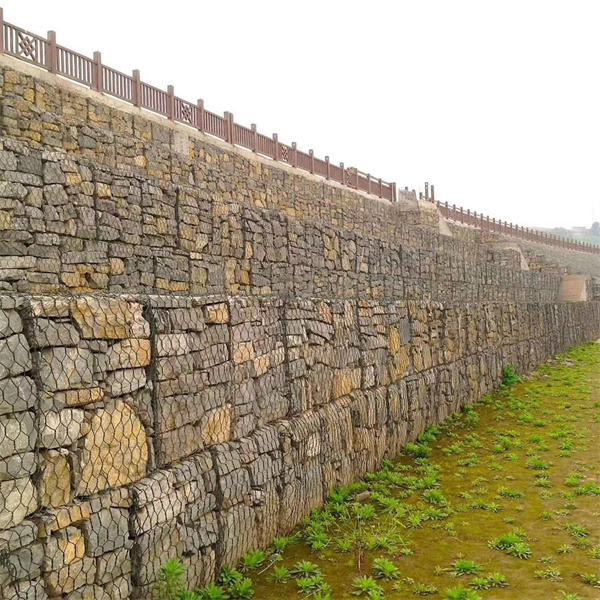നവം . 12, 2024 21:13 Back to list
best gabion retaining wall specifications
Best Gabion Retaining Wall Specifications
Gabion retaining walls are increasingly popular for their strength, versatility, and aesthetic appeal. Comprised of wire mesh baskets filled with stone, these structures provide excellent support for soil stabilization, erosion control, and landscape enhancement. When constructing a gabion retaining wall, it is vital to adhere to specific specifications to ensure durability and functionality. This article will outline the best specifications to consider for a successful gabion retaining wall project.
1. Material Quality
The materials used in gabion wall construction significantly affect its longevity and performance. The wire mesh cages should be made of high-quality, corrosion-resistant steel to withstand environmental elements. Typically, galvanized wire (coated with zinc) or PVC-coated wire is preferred for added protection against rust and deterioration. The stone fill should consist of angular granite or limestone rocks, ideally ranging from 4 to 8 inches in size. This type of stone interlocks effectively, preventing shifting and providing stability.
2. Wall Dimensions
Determining the appropriate dimensions is crucial for the structural integrity of a gabion retaining wall. The height of the wall will depend on the slope and the load it needs to bear. Generally, gabion walls can be built up to 6 feet tall without additional engineering support. For walls exceeding this height, it is advisable to consult with a structural engineer. The width of the base should be at least one-third the height of the wall to ensure stability and resist sliding. Furthermore, a setback of 1 inch per foot of height is recommended to help with drainage and reduce pressure behind the wall.
3. Drainage Considerations
Proper drainage is a critical aspect of gabion wall design. Without adequate drainage, water can build up behind the wall, leading to hydrostatic pressure that may cause failure. Installing perforated drainage pipes behind the wall will facilitate water flow and relieve pressure. Additionally, using a geotextile fabric behind the wall can prevent soil from washing through the mesh while allowing water to pass freely. This will enhance the wall's performance and longevity.
best gabion retaining wall specifications

The foundation for a gabion retaining wall must provide a stable base. The ground should be compacted and leveled before construction begins. For walls over 3 feet tall, a concrete foundation is recommended to ensure additional stability and prevent settling. The foundation should extend two feet beyond the planned width of the wall to accommodate lateral forces and enhance stability.
5. Installation Techniques
Proper installation techniques are essential for achieving a durable gabion wall. Start by excavating the area according to the wall's design. Assemble the gabion baskets according to the manufacturer's instructions and fill them with the specified stone. It is crucial to ensure that the baskets are firmly packed and that the stones are distributed evenly to prevent bulging. Tying the baskets together using wire helps maintain a cohesive structure during filling.
6. Aesthetic Considerations
Gabion walls can serve both functional and decorative purposes. The choice of stone fill can impact the wall's appearance. A variety of stones can be selected to create a visually appealing design, from uniform colors to mixed textures. Additionally, plantings can be incorporated around the wall to enhance the overall landscape aesthetics.
Conclusion
Gabion retaining walls are an excellent choice for many landscaping and construction projects. By adhering to the best specifications regarding materials, dimensions, drainage, foundations, installation, and aesthetics, one can ensure the wall's longevity and effectiveness. With proper planning and execution, gabion walls can serve as both functional structures and beautiful additions to any outdoor space.
-
Visualizing Gabion 3D Integration in Urban Landscapes with Rendering
NewsJul.23,2025
-
The Design and Sustainability of Gabion Wire Mesh Panels
NewsJul.23,2025
-
The Acoustic Performance of Gabion Sound Barriers in Urban Environments
NewsJul.23,2025
-
Mastering the Installation of Galvanized Gabion Structures
NewsJul.23,2025
-
Gabion Boxes: Pioneering Sustainable Infrastructure Across the Globe
NewsJul.23,2025
-
Custom PVC Coated Gabion Boxes for Aesthetic Excellence
NewsJul.23,2025
-
Installation Tips for Gabion Wire Baskets in Erosion Control Projects
NewsJul.21,2025






